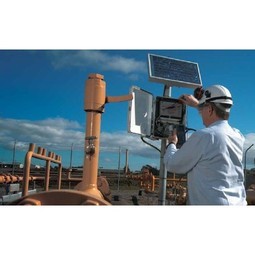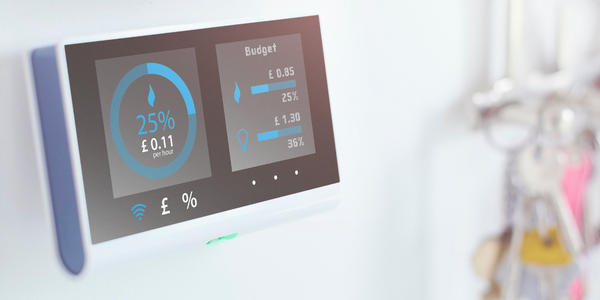公司规模
Large Corporate
地区
- America
国家
- United States
产品
- Cognito® network detection and response platform
- Vectra S-series sensor
技术栈
- Data Science
- Machine Learning
- Behavioral Analysis
实施规模
- Enterprise-wide Deployment
技术
- 网络安全和隐私 - 网络安全
适用行业
- 公用事业
适用功能
- 商业运营
用例
- 网络安全
服务
- 网络安全服务
关于客户
三州发电和输电协会是一家公用事业提供商,为科罗拉多州、内布拉斯加州、新墨西哥州和怀俄明州 20 万平方英里服务范围内的 44 家电力合作社提供批发电力。该公司在横跨四个州的 20 万平方英里服务范围内发电和输电。该公司的内部网络存储了 150 万客户的公司信息和用户数据。多个主机或主计算机位于整个广域网中,为 1500 多名三州员工提供支持。这些主机对于公用事业的业务至关重要,而且非常宝贵,不能冒任何安全风险。
挑战
三州发电输电协会是一家公用事业供应商,为科罗拉多州、内布拉斯加州、新墨西哥州和怀俄明州的 44 家电力合作社提供批发电力,在保护其公司和用户数据免受网络攻击方面面临重大挑战。网络攻击关闭国家电网的威胁是真实存在的,公用事业公司正在加强安全措施,以保证家庭和企业的照明和供暖正常运转。三州的内部网络必须受到保护,该网络存储着 150 万客户的公司信息和用户数据。多个主机或主计算机位于整个广域网中,为 1,500 多名三州员工提供支持。这些主机对公用事业的业务至关重要,而且非常宝贵,不能冒任何安全风险。然而,三州缺乏对主机活动的可见性,当潜在威胁出现时,无法了解威胁的类型或程度,也无法确定优先级。
解决方案
三州发电和输电协会决定使用 Vectra® 的 Cognito® 网络检测和响应平台实时跟踪安全威胁。Cognito 平台可实时检测和分析主动网络漏洞。它对 Tri-State 的内部和互联网网络流量进行深入的持续分析,以自动检测漏洞的所有阶段,因为攻击者试图监视、传播和窃取高价值数据。通过结合数据科学、机器学习和行为分析,可以主动检测已知和未知威胁并自动评分和关联。Vectra 的威胁确定性指数™ 会根据上下文评分自动实时显示更重要的威胁,因此 Tri-State 可以解决最重要的检测。Tri-State 在企业环境中使用 Cognito 取得了良好的效果,因此它计划将 Cognito 网络检测和响应扩展到发电厂和现场位置。
运营影响

Case Study missing?
Start adding your own!
Register with your work email and create a new case study profile for your business.
相关案例.

Case Study
IoT Solutions for Smart City | Internet of Things Case Study
There were several challenges faced: It is challenging to build an appliance that can withstand a wide range of voltage fluctuations from as low at 90v to as high as 320v. Since the device would be installed in remote locations, its resilience was of paramount importance. The device would have to deal with poor network coverage and have the ability to store and re-transmit data if networks were not available, which is often the case in rural India. The device could store up to 30 days of data.

Case Study
Automation of the Oguz-Gabala-Baku water pipeline, Azerbaijan
The Oguz-Gabala-Baku water pipeline project dates back to plans from the 1970’s. Baku’s growth was historically driven by the booming oil industry and required the import of drinking water from outside of the city. Before the construction of the pipeline, some 60 percent of the city’s households received water for only a few hours daily. After completion of the project, 75 percent of the two million Baku residents are now served around the clock with potable water, based on World Health Organization (WHO) standards. The 262-kilometer pipeline requires no pumping station, but uses the altitude differences between the Caucasian mountains and the capital to supply 432,000 m³/d to the Ceyranbatan water reservoir. To the people of Baku, the pipeline is “the most important project not only in 2010, but of the last 20 years.”

Case Study
GPRS Mobile Network for Smart Metering
Around the world, the electricity supply industry is turning to ‘smart’ meters to lower costs, reduce emissions and improve the management of customer supplies. Smart meters collect detailed consumption information and using this feedback consumers can better understand their energy usage which in turn enables them to modify their consumption to save money and help to cut carbon emissions. A smart meter can be defined in many ways, but generally includes an element of two-way communication between the household meter and the utility provider to efficiently collect detailed energy usage data. Some implementations include consumer feedback beyond the energy bill to include online web data, SMS text messages or an information display in consumers’ premises. Providing a cost-effective, reliable communications mechanism is one of the most challenging aspects of a smart meter implementation. In New Zealand, the utilities have embraced smart metering and designed cost effective ways for it to be implemented. The New Zealand government has encouraged such a move to smart metering by ensuring the energy legislation is consistent with the delivery of benefits to the consumer while allowing innovation in this area. On the ground, AMS is a leader in the deployment of smart metering and associated services. Several of New Zealand’s energy retailers were looking for smart metering services for their residential and small business customers which will eventually account for over 500,000 meters when the multi-year national deployment program is concluded. To respond to these requirements, AMS needed to put together a solution that included data communications between each meter and the central data collection point and the solution proposed by Vodafone satisfied that requirement.

Case Study
NB-IoT connected smart meters to improve gas metering in Shenzhen
Shenzhen Gas has a large fleet of existing gas meters, which are installed in a variety of hard to reach locations, such as indoors and underground, meaning that existing communications networks have struggled to maintain connectivity with all meters. The meter success rate is low, data transmissions are so far unstable and power consumption is too high. Against this background, Shenzhen Gas, China Telecom, Huawei, and Goldcard have jointly trialed NB-IoT gas meters to try and solve some of the challenges that the industry faces with today’s smart gas meters.

Case Study
British Gas Modernizes its Operations with Innovative Smart Metering Deployment
The UK government has mandated that smart meters are rolled out as standard across Great Britain by end of 2020, and this roll-out is estimated to create £14 billion in net benefits to the UK in consumer energy savings and lower energy generation demand, according to the Oxford Economics report, “The Value of Smart Metering to Great Britain.” While smart-metering systems have been deployed in many countries, the roll-out in Great Britain is unique because it is led by energy retailers, who have responsibility for the Electricity and Gas meters. The decision to have a retailer-led roll out was made by DECC (Department of Energy and Climate Change) to improve customer experience and drive consumer benefits. It has also led to some unique system-level requirements to support the unique local regulatory model.

Case Study
OneWireless Enabled Performance Guarantee Test
Tata Power's power generation equipment OEMs (M/s BHEL) is required to provide all of the instrumentation and measurement devices for conducting performance guarantee and performance evaluation tests. M/s BHEL faced a number of specific challenges in conducting PG tests: employing high-accuracy digital communications for instrumentation, shortening setup and dismantling time, reducing hardware required, making portable instrument setup, avoiding temporary cabling work and the material waste costs







